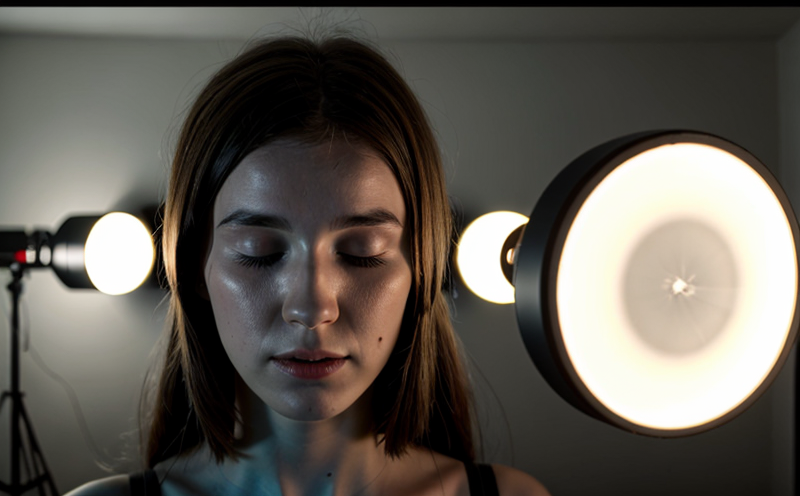IEC 62914 Flicker Measurement Testing of LED Drivers
The International Electrotechnical Commission (IEC) Standard IEC 62914 provides a comprehensive framework for the measurement and evaluation of flicker in light-emitting diode (LED) lighting systems. This standard is particularly relevant to quality managers, compliance officers, R&D engineers, and procurement professionals who are concerned with ensuring that LED drivers meet stringent safety and performance criteria.
IEC 62914 addresses the issue of visual discomfort caused by flicker in artificial lighting environments, which can lead to health issues such as eye strain, headaches, and even seizures for people sensitive to photic stimuli. The standard outlines methods for measuring and evaluating the amount of flicker present in LED drivers and fixtures, providing a quantitative assessment that ensures compliance with regulatory requirements.
Testing according to IEC 62914 involves several key steps, including specimen preparation, calibration of measurement equipment, and execution of the test protocol. Specimen preparation typically involves selecting representative samples of the LED driver under test, ensuring they are in a stable operating condition before testing begins. Calibration ensures that all instruments used for measurement are accurate and traceable to national standards.
The actual flicker measurement process is conducted using specialized equipment capable of capturing both the waveform and intensity variations over time. This data is then analyzed according to predefined criteria laid out in IEC 62914, which includes calculating metrics such as the percentage of time spent above or below certain thresholds for flicker severity. Compliance with these limits helps guarantee that the LED driver does not induce unacceptable levels of visual disturbance.
Testing laboratories accredited under this standard offer services tailored to meet clients' specific needs. These labs employ highly skilled technicians who are certified according to relevant international standards such as ISO/IEC 17025, ensuring accurate and reliable results every time. They also provide detailed reports summarizing the findings of each test run, along with recommendations for improvements where necessary.
By adhering strictly to IEC 62914, manufacturers can ensure their products meet global safety standards while enhancing consumer satisfaction by reducing instances of visual discomfort caused by flicker. This not only protects users' health but also contributes positively towards fostering trust in the brand among potential customers.
| Parameter | Description |
|---|---|
| Flicker Index (FI) | A dimensionless parameter indicating the degree of flicker, calculated as the ratio of the perceived flicker to the maximum possible flicker. |
| Stroboscopic Effect Threshold | The minimum level at which a stroboscopic effect becomes noticeable. It is expressed in Hertz (Hz). |
Industry Applications
The application of IEC 62914 flicker measurement testing extends across various sectors including residential, commercial, industrial, and public spaces. In each case, ensuring compliance with this standard helps maintain high standards of visual comfort and safety.
Residential settings benefit from reduced instances of eye strain and improved sleep quality thanks to the absence or minimal presence of flicker in lighting fixtures. Commercial establishments can enhance their brand image by demonstrating commitment to customer well-being through adherence to international safety norms. Industrial facilities gain peace of mind knowing that their workers are protected against potential health risks associated with prolonged exposure to flickering light sources.
In public spaces, compliance ensures better user experience and enhances the overall aesthetic appeal of these environments. For example, in airports or train stations, where long periods of time may be spent under artificial lighting conditions, reducing flicker helps create more pleasant atmospheres that contribute positively towards passenger satisfaction.
Competitive Advantage and Market Impact
Incorporating IEC 62914 flicker measurement testing into product development strategies offers numerous competitive advantages. By addressing flicker concerns early in the design phase, manufacturers can avoid costly recalls later on due to non-compliance with regulatory requirements. Additionally, meeting these standards can differentiate a company’s offerings from competitors who may not prioritize such measures.
From a marketing perspective, highlighting compliance with IEC 62914 can attract environmentally conscious consumers who are increasingly concerned about the health impacts of exposure to flickering light sources. This positioning also opens up opportunities for collaboration with other industry leaders focused on sustainability and safety initiatives.
The long-term benefits extend beyond just immediate sales increases; they include improved brand reputation, enhanced customer loyalty, and increased market share as more consumers become aware of the importance of addressing flicker issues in LED lighting systems. As regulatory bodies continue to strengthen their requirements regarding visual comfort and safety standards globally, staying ahead with IEC 62914 compliance will be crucial for maintaining a competitive edge.
Use Cases and Application Examples
IEC 62914 flicker measurement testing finds practical application in numerous scenarios, ranging from small-scale residential installations to large-scale commercial projects. Some specific examples include:
- Residential buildings where multiple LED drivers are used for general illumination.
- Office spaces equipped with task lighting fixtures that incorporate dimming capabilities controlled by LED drivers.
- Large-scale sports venues and concert halls where high-intensity LED lighting systems operate continuously for extended durations.
These applications highlight how IEC 62914 testing plays a vital role in ensuring the quality, reliability, and safety of LED driver products across diverse environments. The stringent criteria set forth by this standard help maintain consistent performance standards worldwide, thereby promoting trust among end-users and stakeholders alike.





